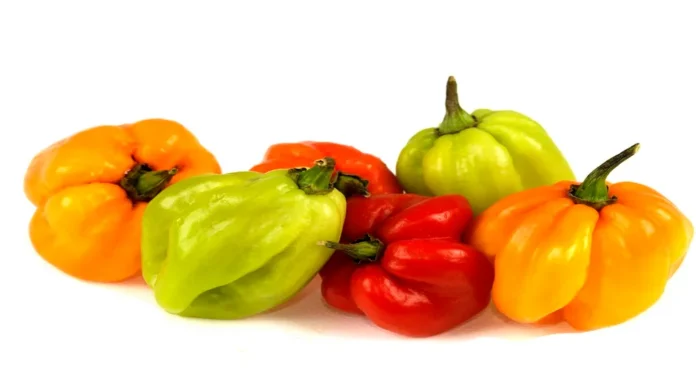The Scotch Bonnet pepper is a vibrant and fiery ingredient that plays a crucial role in Caribbean cuisine. Known for its distinctive shape and intense heat, this pepper is not only a staple in many traditional dishes but also a symbol of the rich culinary heritage of the islands. For those eager to learn more about this remarkable pepper, you can explore additional information at Scotch Bonnet Pepper.
Historical Background
The Scotch Bonnet pepper has deep roots in the Caribbean, particularly in Jamaica, where it is celebrated for its unique flavor and heat. Its name is derived from its resemblance to a traditional Scottish bonnet, reflecting the cultural influences that have shaped Caribbean cuisine over the centuries. The pepper is believed to have been brought to the Caribbean by African slaves, who incorporated it into their cooking, thus creating a fusion of flavors that is characteristic of the region today.
This pepper is closely related to the Habanero pepper, sharing similar heat levels and flavor profiles. However, the Scotch Bonnet is distinct in its fruity undertones and slightly different shape, making it a favorite among chefs and home cooks alike. Its vibrant colors, ranging from green to yellow and red, add visual appeal to dishes, making it a popular choice for garnishing and presentation.
Flavor Profile and Heat
One of the defining characteristics of the Scotch Bonnet pepper is its heat, which can range from 100,000 to 350,000 Scoville Heat Units (SHU). This places it among the hottest peppers globally, making it a go-to ingredient for those who enjoy spicy food. However, what sets the Scotch Bonnet apart is its complex flavor profile. The pepper has a sweet, fruity taste that balances its heat, making it an excellent addition to a variety of dishes.
The unique flavor of the Scotch Bonnet pepper enhances the overall taste of meals, providing a depth that is hard to replicate with other peppers. This combination of heat and sweetness makes it particularly well-suited for marinades, sauces, and salsas, where it can shine without overwhelming other flavors.
Culinary Applications
In Caribbean cuisine, the Scotch Bonnet pepper is an essential ingredient in many traditional dishes. It is famously used in jerk seasoning, where it is blended with spices such as allspice, thyme, and garlic to create a marinade that infuses meats with flavor and heat. Jerk chicken, a beloved dish in Jamaica, showcases the Scotch Bonnet’s ability to enhance the taste of grilled meats, making it a staple at barbecues and festive gatherings.
Beyond jerk seasoning, Scotch Bonnet peppers are used in a variety of sauces and condiments. They are often found in hot sauces, where their fruity flavor complements the heat, creating a perfect balance for drizzling over dishes or using as a dipping sauce. Many Caribbean households have their own recipes for hot sauce, often passed down through generations, highlighting the pepper’s versatility.
Additionally, Scotch Bonnet peppers can be incorporated into soups, stews, and curries, adding a spicy kick to these comforting dishes. They can also be pickled or used in chutneys, providing a zesty accompaniment to meals. The pepper’s ability to enhance flavors while delivering heat makes it a favorite among chefs and home cooks alike.
Health Benefits
In addition to their culinary uses, Scotch Bonnet peppers offer several health benefits. They are rich in vitamins A and C, both of which are essential for maintaining a healthy immune system. Vitamin A supports vision and skin health, while vitamin C is known for its antioxidant properties, helping to combat free radicals in the body.
The capsaicin found in Scotch Bonnet peppers is also linked to various health benefits. Capsaicin is known to boost metabolism, aid in weight loss, and even provide pain relief for certain conditions. Some studies suggest that consuming spicy foods may help reduce the risk of certain diseases, including heart disease and cancer, although more research is needed in this area.
Growing Scotch Bonnet Peppers
For those interested in growing their own Scotch Bonnet peppers, the process can be both rewarding and enjoyable. These peppers thrive in warm climates and require plenty of sunlight and well-drained soil. They can be grown in gardens or containers, making them accessible for both seasoned gardeners and beginners.
When planting Scotch Bonnet seeds, it is advisable to start them indoors if you live in a cooler climate. Once the seedlings are established and the weather warms up, they can be transplanted outdoors. Regular watering and fertilization will help ensure healthy growth, and with proper care, you can expect to harvest peppers within 75 to 90 days after planting.
Handling and Safety
When working with Scotch Bonnet peppers, it is essential to handle them with care due to their intense heat. Wearing gloves while chopping or handling the peppers is advisable to avoid skin irritation. Additionally, be cautious when touching your face or eyes after handling the peppers, as the oils can cause discomfort.
If you are new to using Scotch Bonnet peppers, start with a small amount in your dishes to gauge your tolerance for heat. The flavor is robust, so even a little can go a long way in enhancing your meals. As you become more accustomed to the heat, you can gradually increase the quantity to suit your taste.
Conclusion
The Scotch Bonnet pepper is a culinary treasure that embodies the vibrant flavors of Caribbean cuisine. Its unique combination of heat and sweetness makes it a versatile ingredient that enhances a wide range of dishes. Whether you are enjoying traditional jerk chicken or experimenting with homemade hot sauces, the Scotch Bonnet pepper is sure to elevate your culinary experience. Embrace the heat and flavor of this remarkable pepper, and discover the rich culinary traditions of the Caribbean.
